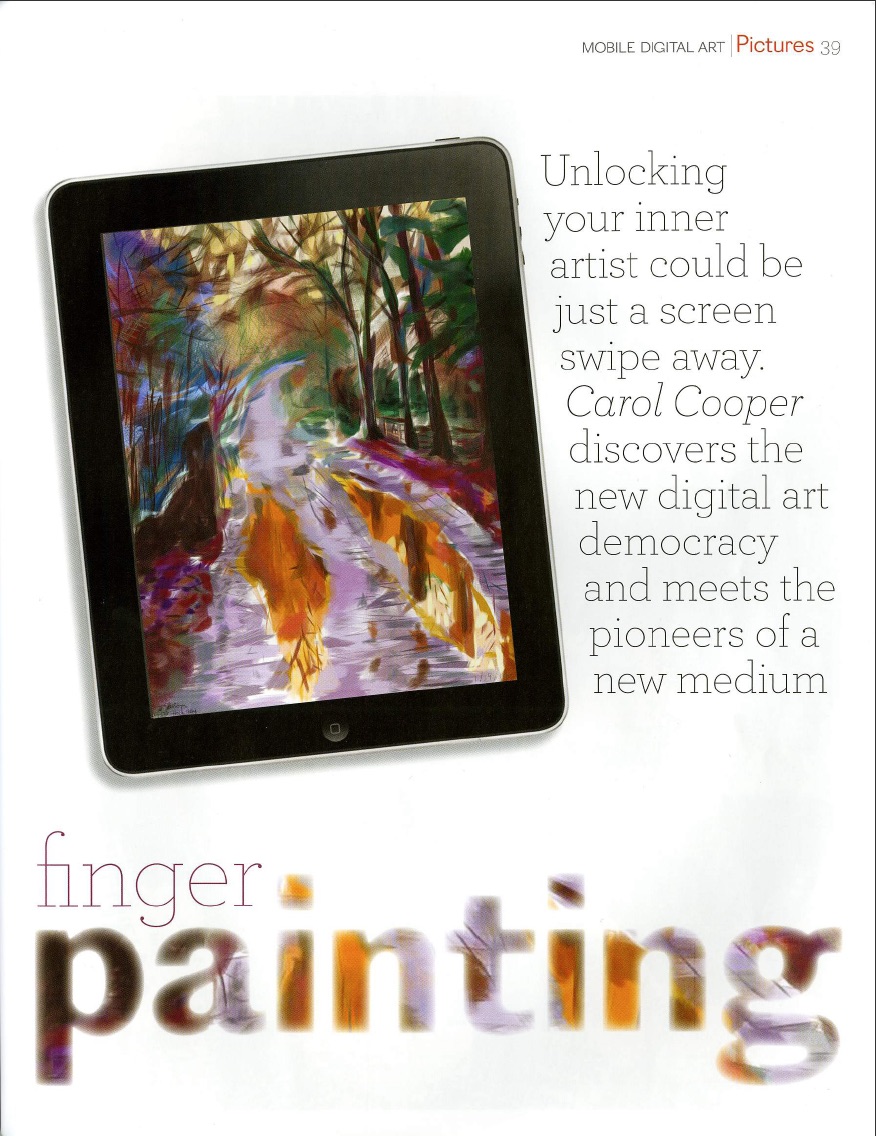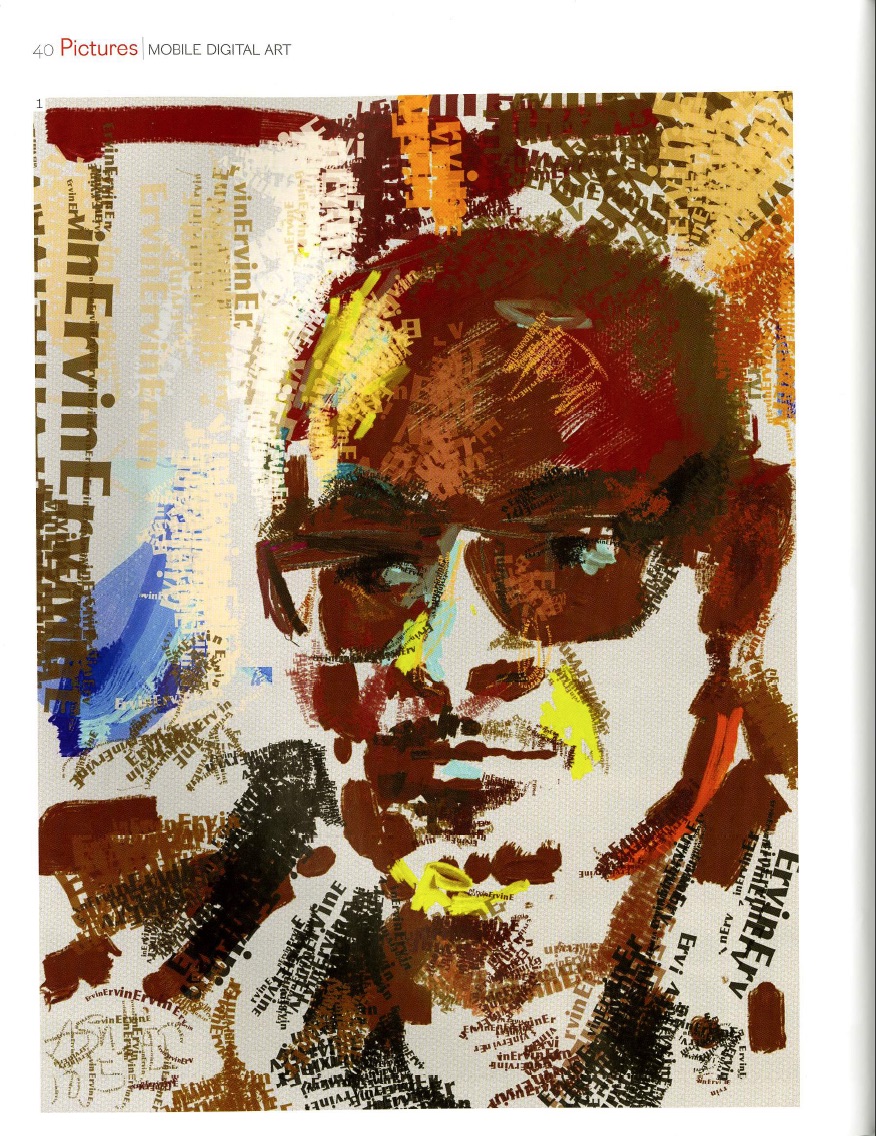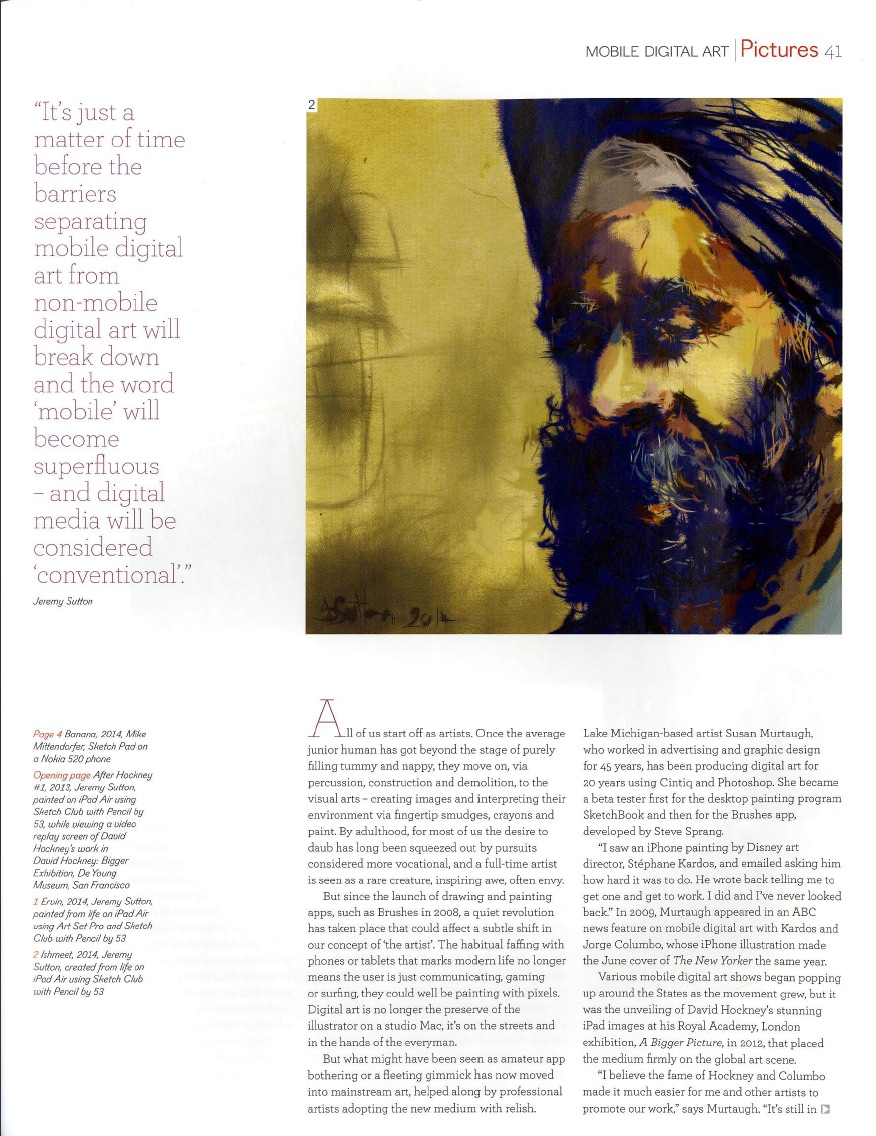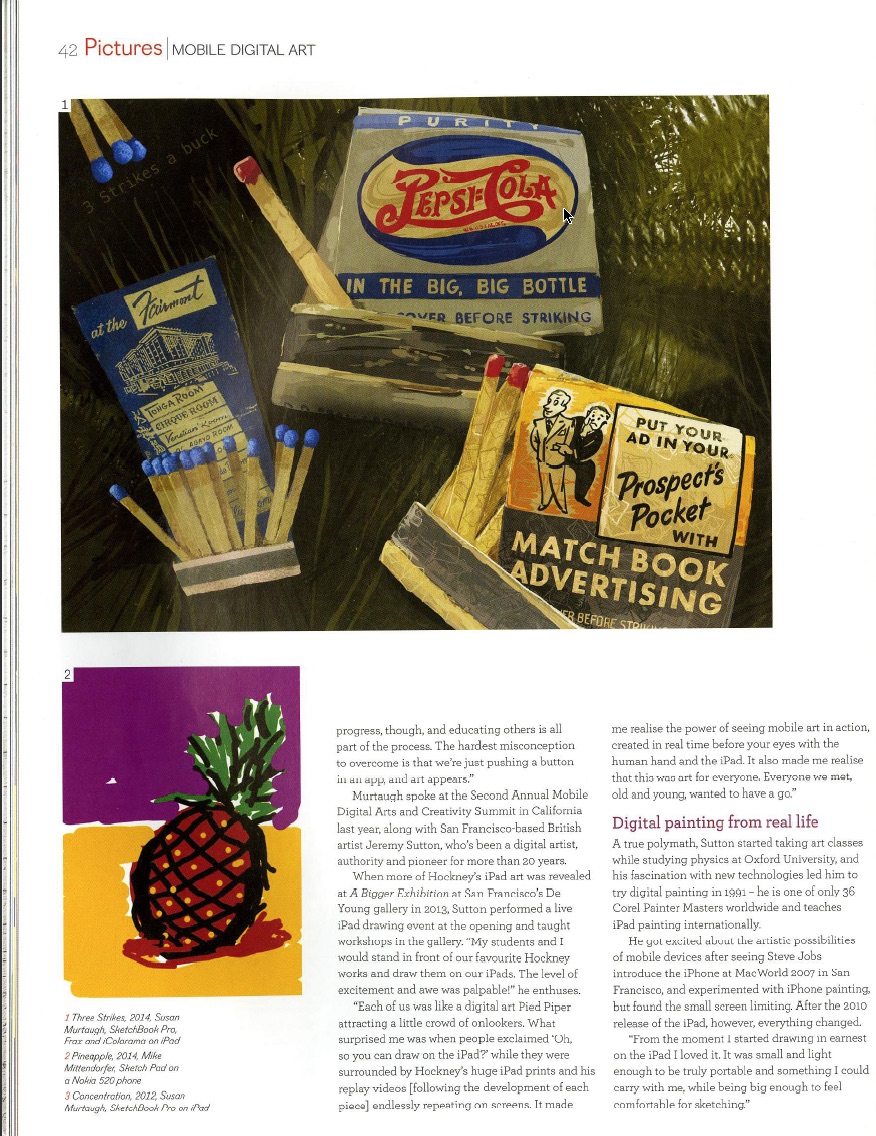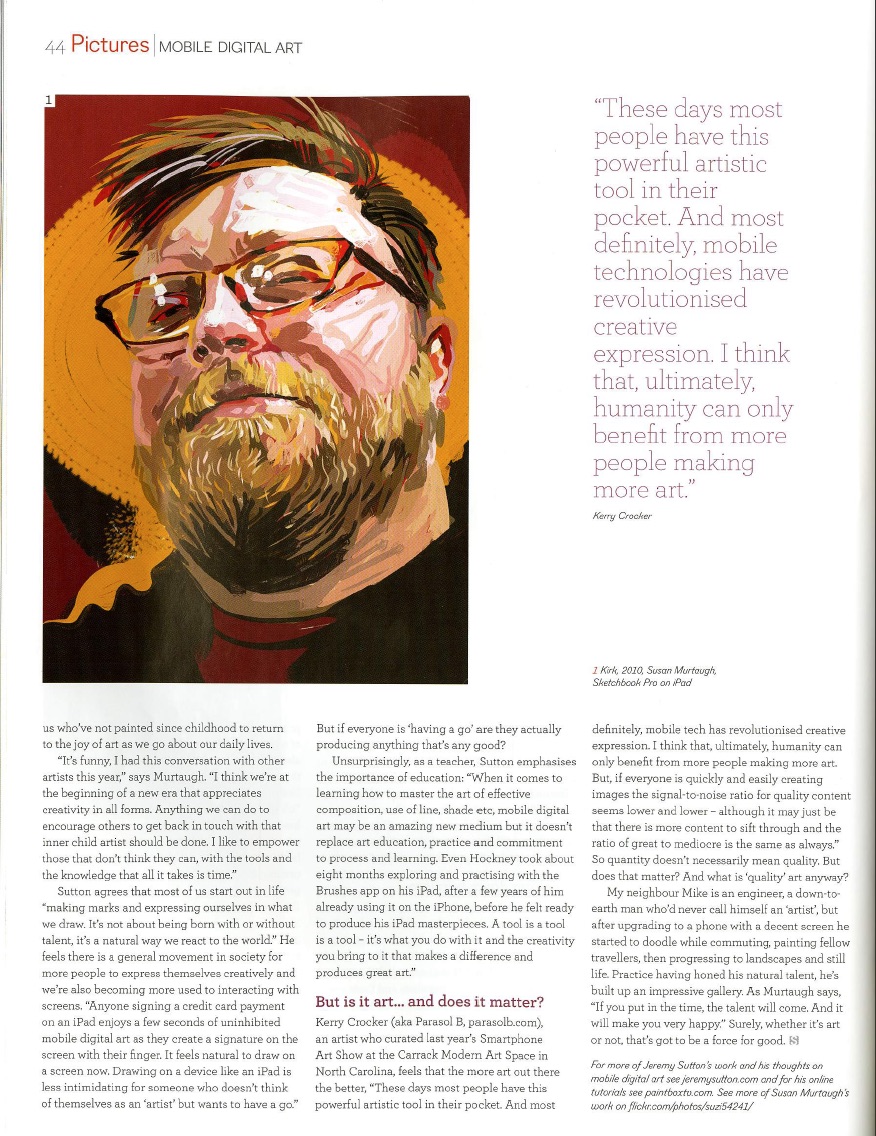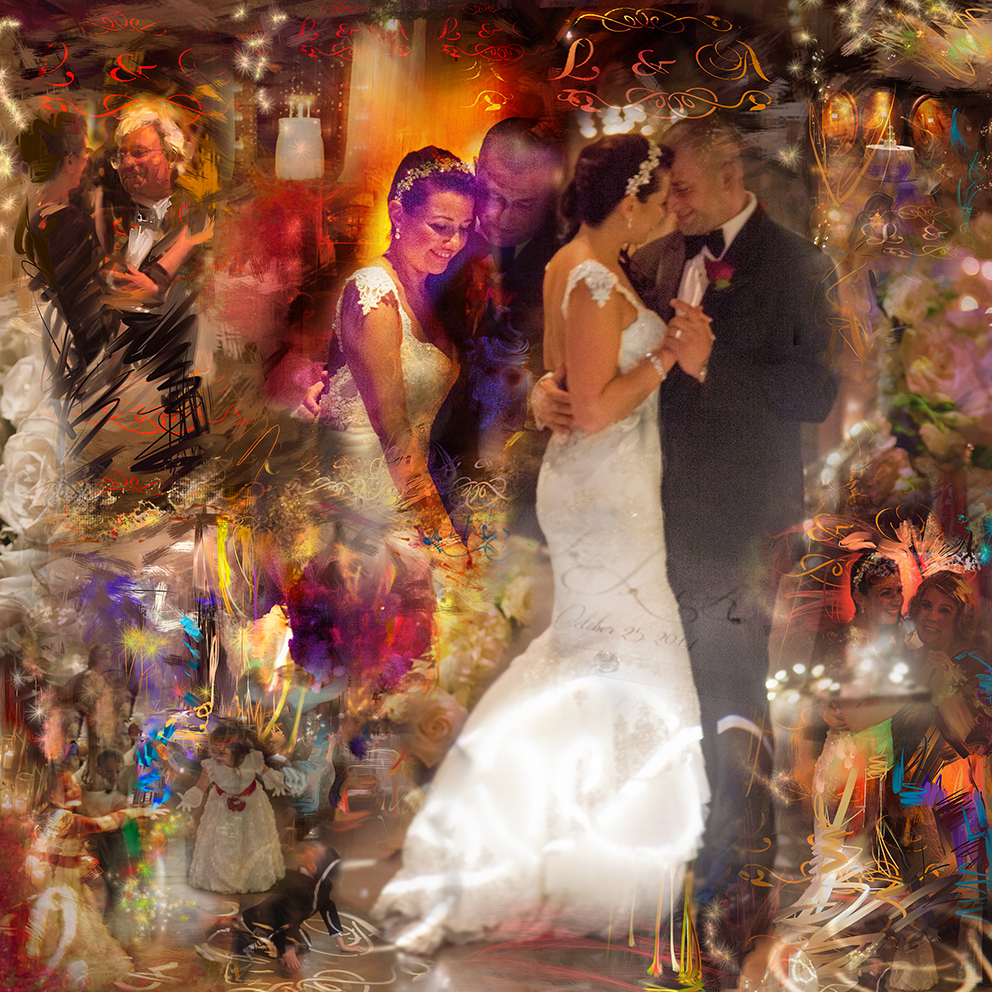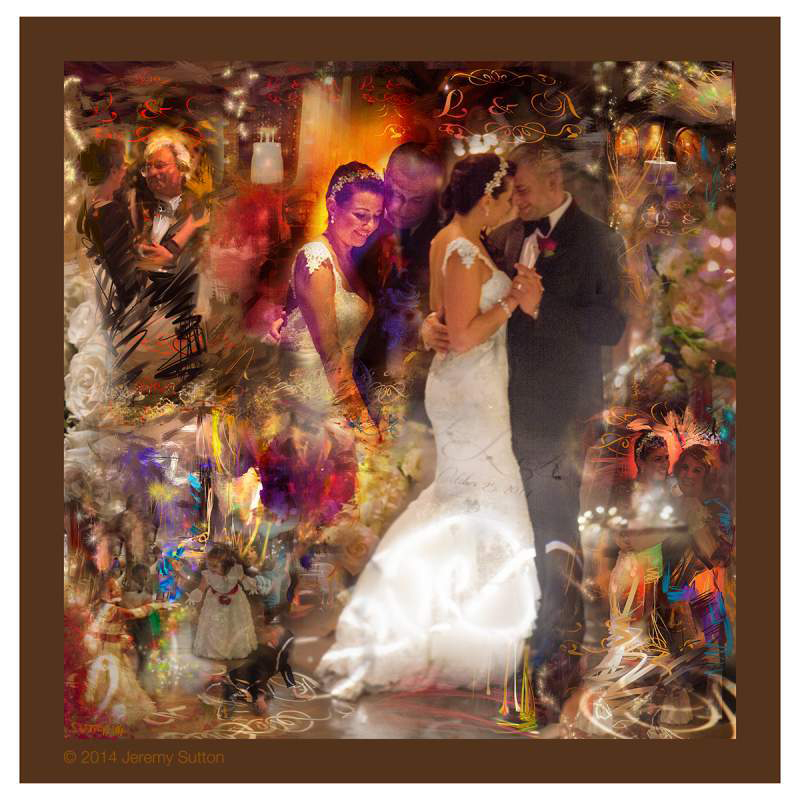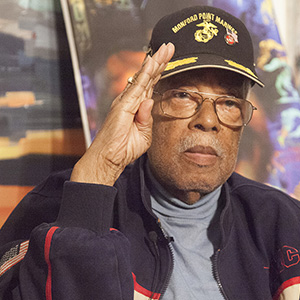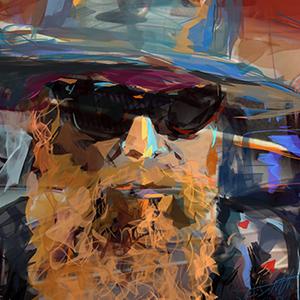Most of the topic headings in this post are based on interview questions I was asked by Carol Cooper in preparation for her article published in the March 2015 issue of Shots magazine (issue 155). Her article, which features several different iPad artists (Susan Murtaugh, Kerry Crocker and myself), addresses the impact mobile digital art is having on breaking down barriers between “artist” and “non-artist”, giving everyone a powerful creative tool to enjoy. Shots magazine have kindly allowed me to share the article on my web site. The thoughts I share here on this page are more extensive than the quotes in Carol’s article. If you’re interested in this topic I recommend you read both. Thanks, Carol, for stimulating me to share my thoughts on this exciting new world of mobile digital art!
My personal journey into the world of mobile digital art.
I love experimenting and exploring with mark-making media, tools, technologies and devices. It was this spirit of creative adventure that led me to take life drawing, sculpture and print-making classes at the Ruskin School of Drawing and Fine Art while I studied Physics at Oxford University (as well as developing black and white film in the Pembroke College darkroom); which led me to dive into digital painting back in 1991 when I was introduced to PixelPaint Pro and the Mac through Claire Barry of Supermac; and that got me excited about the artistic possibilities of mobile devices when I was in the hall at the Moscone Center for the MacWorld 2007 keynote in San Francisco as Steve Jobs introduced the iPhone. (See the story, pasted at the bottom of this page, by computer pioneer Alan Kay regarding the iPhone launch and his conversation with Steve Jobs immediately afterwards.)
In 2010 I came across an artist, Roderick Smith, sketching on his iPhone using the Brushes app and a Pogo stylus in the Norton Simon Museum in Pasadena. I immediately ordered a Pogo stylus and had a go myself, preferring Autodesk SketchBook Mobile to Brushes at that time, but have to admit that it didn’t “ignite” for me. The size of the screen felt too constrained. I preferred sketching in my sketch book. That summer, after the release of the iPad, I made my first iPad sketch while teaching a workshop in Amsterdam (https://jeremysutton.com/ipad-sketch-amsterdam).
Fast forward to January 2012 when I walked through the David Hockney ‘Bigger Picture’ exhibition in the Royal Academy, London, and as I stood there in a gallery surrounded by his large iPad prints, I thought: “That’s it! The iPad has arrived as an established art tool.” The following weekend I was back in San Francisco at Macworld and trying out every paint app that was on the demo iPads at the Nomad Brush booth. I purchased my first Nomad Brush iPad stylus before I even bought my first iPad.
From the moment I started drawing in earnest on the iPad I loved it! It was small and light enough to be truly portable and something I could carry with me most of the time, whilst being big enough to feel comfortable for sketching. From that moment on I have experimented with, and am continuing to experiment with, every iPad stylus and painting app I can find. The combination of great painting apps on mobile devices brings together compactness and immediacy with accessibility and versatility! I love the ease with which you can replay and share painting process in apps like Sketch Club, Brushes and Procreate.

“Still Life Study”, 2013, created using Art Rage and Adonit Jot Touch stylus on iPad2
I started teaching iPad drawing workshops and using the iPad in my professional work, including for live event painting (https://jeremysutton.com/live-painting), such as at the opening of the David Hockney ‘A Bigger Exhibition’ at the de Young Museum, San Francisco, and,j more recently, at the SEMA hot rod car show in Las Vegas (https://jeremysutton.com/sema-2014).
This iPad drawing replay was inspired David Hockney’s iPad drawings in the historic and epic art show “David Hockney: A Bigger Exhibition”, the largest exhibition ever at the de Young Museum, and the biggest exhibition of Hockney’s art in the United States since 2005. It was created in the exhibition using the Sketch Club app with the Adonit Jot Touch stylus. I spent about two hours working on this while watching the replay video again and again, showing Hockney’s process of building up a painting from start to finish. Every time I looked up I saw a different stage of the painting which made an interesting subject changing with time. The guards almost had to push me out of the gallery! The source drawing was part of Hockney’s ensemble of works entitled “The Arrival of Spring in Woldgate, East Yorkshire in 2011 (Twenty Eleven) Version 3, 2011-2013”.
I taught several iPad art workshops based around the Hockney show (https://www.paintboxtv.com/inspired-by-hockney), in which my students and I would draw on our iPads our favorite Hockney works in the show galleries, sitting or standing in front of them. The level of excitement, energy and awe was palpable! Each of us was like a digital art pied piper attracting a little crowd of onlookers. Everyone was curious, asking how we made marks, chose color, what app were we using, what stylus were we holding, et cetera. What surprised me, besides the level of interest in seeing live iPad drawing, was when people exclaimed “oh, so you can draw on the iPad?” This being exclaimed while they were surrounded by Hockney’s huge iPad prints and wonderful replay videos endlessly repeating on screens. It made me realized the power of seeing mobile art in action being created in real time before your eyes with the human hand and the iPad. It also made me realize that this was art for everyone. Everyone we met, old and young, wanted to have a go!
The same infectious enthusiasm of curious onlookers followed when I ran a ‘Tea ‘n’ Pixels’ iPad sketching class in the National Gallery, London, last summer.
With that experience I was excited to be invited to speak and exhibit at the mobile Digital Art & Creativity Summit (https://www.mdacsummit.org), of which the Mobile Digital Art Exhibition was a part, this past summer where mobile digital artists from all over the world gathered, shared and painted. In terms of the mobile digital art ‘scene’, being part of the mDAC Summit was my first visceral in-person immersion into that scene at that scale. Everyone I met there was friendly, enthusiastic and all about sharing. It’s a great community to be part of.

“Portrait of Paul”, 2013, created using Art Rage and Adonit Jot Touch stylus on iPad2 at the ideacity conference, Toronto
If one had to highlight an early pioneering mobile painting app, it would have to be Brushes, originally developed by Steve Sprang for the iPhone, that he was invited to demonstrate when Steve Jobs introduced the iPad in 2010. Soon after Brushes was available for the iPhone author Lawrence Weschler showed it to his friend artist David Hockney. Hockney then grabbed Weschler’s phone and create his first iPhone painting (https://www.nybooks.com/articles/archives/2009/oct/22/david-hockneys-iphone-passion/). This started the journey that led Hockney to using the iPad and ultimately to the amazing exhibitions of his wonderful iPad drawings. Whilst there were other painting apps on the iPhone prior to the release of the iPad, the release of Brushes was a seminal development in the growth of mobile digital art.
Thoughts on what led mobile digital art from being perceived as a ‘hobby’ to being taken seriously in the established art world.
Mobile digital art is art made on the relatively new technology and platforms of mobile digital devices. For the moment art made on these mobile devices can be thought of as art that is being created in a new art medium. Any new painting medium – whether egg tempera, oil, use of chemical colors, screen-printing, acrylic, digital and now mobile digital – always initially meets resistance and skepticism before eventually becoming widespread, accepted and respected. It is the inherent nature of the cycle of art technology revolutions.
In the foreword to my 2002 book “Secrets of Award-Winning Digital Artists” artist Peter Max wrote: “During my second or third year of art school, new types of paint emerged on the scene. They were called acrylics. I remember the numerous debates and conversations about whether or not acrylic paintings would be considered fine art. I thought to myself that art is not so much about the medium it’s done in than it is about the creativity. …The medium is an artist’s inspiration and simply acts to bring out different types of creativity.”
I can’t say it better than Peter Max did in these words. Mobile digital painting is in its infancy from a historical perspective. Whether mobile digital art was initially seen as a ‘hobby’ before it was taken seriously as an art medium, is really just describing a normal course of events for any new medium in art. It’s not so much that it was viewed as a ‘hobby’ as much as it was simply new and different. It was being used by professionals from the beginning. Just look at the fact that the prestigious magazine, The New Yorker, featured an iPhone drawing by artist Jorge Colombo on its cover in June 2009 (https://www.newyorker.com/the-new-yorker-blog/cover-story-finger-painting and https://gizmodo.com/5268926/june-1st-new-yorker-cover-drawn-entirely-on-the-iphone).
I think that the fact that mobile digital art was displayed in the Royal Academy within five years of the medium coming into existence is pretty fast!
Thoughts on the significance that David Hockney’s iPad art, seen in the ‘Bigger Picture’ show at London’s Royal Academy in 2012 and then at ‘A Bigger Exhibition’ in the de Young Museum, San Francisco, last year, played in raising the profile of mobile digital art and encouraged other artists to pursue this media.
From the time Brushes was released there had been a growing under swell of artists around the world experimenting with the iPhone and then the iPad, forming online groups, connecting and sharing their artworks through social media. However here in the United States nothing I know of had the impact of David Hockney’s ‘A Bigger Exhibition’, which people are still talking about. It left a lasting impact on anyone who visited it. Thus although mobile digital art had already began to take hold amongst artists around the world, Hockney’s exhibitions undoubtedly raised the profile of mobile digital art and encouraged other artists, including me, to pursue this media seriously. Would mobile digital art have caught on anyway without David Hockney? Absolutely yes, but not as fast. Hockney has led the way by example, by his stature and by the quality, quantity, imagination and scale of his work. His energy and enthusiasm for exploring this new medium has impacted, inspired and influenced many thousands of people the world over. As I painted on the iPad at the opening of his de Young show, a common reaction was first “wow!”, and then “I want to have a go!”
Thoughts on mobile digital art being mainly a movement about the mastering of a new art medium.
Defining ‘mobile digital art’ is like trying to define a moving target. Moving in space, since we’re talking about mobility – art on the move – and moving in time, since everything’s heading mobile! Take the MacBook Air, the Wacom Cintiq Companion (Windows pen and touch tablet computer) and Cintiq Companion Hybrid (Android pen and touch tablet computer), the Microsoft Surface Pro, the Samsung Galaxy Notebook, and so on… The devices we can use for digital painting are converging towards mobility from both ends of the spectrum: mobile phone screens getting larger at one end and laptop computers getting more compact, mobile and tablet-like at the other end of the spectrum. Desktop computer operating systems are evolving into universal operating systems that are indistinguishable from mobile/cloud operating systems. All devices are heading in the direction of touch screens and, I expect in the not too distant future, motion gesture driven control which I’ve had experience painting with using both Leap Motion and Kinect technologies (https://jeremysutton.com/air-painting). It’s just a matter of time before the barriers separating mobile digital art from non-mobile digital art will break down and word ‘mobile’ will become superfluous – a given – and that digital media will be considered ‘conventional’.
I see mobile digital art as the art being created with a wonderful new, powerful, easily accessible and exciting set of digital paint tools that you can easily carry with you anywhere. It is the product of creativity + new technology. It is indeed about mastering, exploring and pushing the boundaries of a new medium.
Whether mobile digital art is a ‘movement’, that’s really for art historians to look back and decide. ‘Mobile digital art’ encompasses so many art styles and approaches. The French Impressionists can be considered a movement who explored, experimented with, mastered and took advantage of what was new technology at the time: the new wider range of chemical oil paint colors, combined with new more compact, more portable technology for taking the paints out of the studio and into nature. But would you describe their movement as being about mastering a new medium? It was and it wasn’t. It was about much more than that. A new way of approaching their painting process and choice of subject matter. You don’t think of the Impressionist movement as mainly one of mastering the new chemical colors. Impressionism, like the ‘mobile digital art’ also encompassed many different artists and styles. As Peter Max said, “art is not so much about the medium it’s done in than it is about the creativity.” A movement in my mind is more about creativity than about the tools. T here is more to making mobile digital art than just mastering the tools, and any ‘movement’ that will emerge from it will, I expect, emerge from what is done with it that is new and unique and was not thought of, or possible, before.
The unique qualities that painting on the smartphone, iPad or other mobile device, allows that conventional media doesn’t offer.
The iPad, and the many other mobile devices that you can paint on, give artists a wonderful new freedom and do represent ‘the new canvas for artists’, as Corliss Blakely described it, and offer qualities that conventional (non-digital) media doesn’t offer. Though I primarily reference the iPad since that is my primary mobile digital art tool, I think it’s important to acknowledge that there are now plenty of artists working on other mobile devices and platforms, each of which have their own fan base and followers. I do also use the Wacom Cintiq Companion and Microsoft Surface Pro from time to time. Like with any tools and media, your choice of device is personal taste and may involve many factors. My focus on the iPad doesn’t mean it is inherently better or that I look down on other platforms or devices. It is simply my ‘go to’ mobile painting device of choice.
Part of what makes the iPad ‘the new canvas for artists’ is the ease and speed with which you can get painting. I can sit down, open and turn on my iPad and be painting within seconds. This compares to the five minutes or so it may take me to unpack, plug in (if I can find a socket) and start up my MacBook Pro laptop computer and Wacom pen tablet, open up Corel Painter 2015 and get painting, or to set up a set of conventional paints, layout my palette, prop up my canvas or pad and get painting traditionally, not to mention the close down / clean up time in either case versus the convenience of simply turning off the iPad.
Painting apps on the iPad are usually very intuitive and easy to use. The icons and interface are generally designed so that almost anyone can work out the basics without needing to resort to a user manual.
The mobility, the compact size and light weight of the iPad, allows you to, as Corliss says “paint anywhere and anytime” (and, in the case of Hockney, carry it with you in specially designed jacket pockets).
“Ishmeet”, 2014 – This portrait was created from life on a plane journey from London to San Francisco using an iPad Air using the Sketch Club app and Pencil by 53. Click on the video above to see stroke by stroke build up of the painting.
The iPad lends itself to drawing from life. Even though it is quite possible to do magnificent work from photo reference, either with the photo in the iPad or looking at a physical (non-digital) print, the tools and convenience of the iPad make it an ideal live sketching tool. As you can see from my work, I love sketching people’s portraits from life. There is something so special and unique about the interaction between artist and model when you do a drawing from life. It is such a different experience to working from a photo. As Hockney said, “photography is all right if you don’t mind looking at the world from the point of view of a paralyzed cyclops—for a split second. But that’s not what it’s like to live in the world, or to convey the experience of living in the world.” This is a sentiment echoed by photographer Chris Friel: “Gaze is very selective, your brain doesn’t work like an Ansel Adams still where everything is in sharp focus.” Drawing from life gives you an ever-changing dynamic point of view and an ever-changing focus, the energy and variation of which is reflected in your brush strokes on the digital canvas. In the case of drawing a portrait, drawing from life also makes the art-making a more collaborative creative process between you, the artist, and your subject.
The speed with which you can make marks, and change and adjust brush size, opacity, color etc. was summarized this very succinctly by Hockney in his remarks on October 24th at the de Young Museum, San Francisco, in the Q&A prior to the opening A Bigger Exhibition: “I do think it (the iPad) is a new medium. I found it much more interesting than the Photoshop computer drawing because it’s quicker. You can pick up a colour from another colour. You can work very fast. Working very fast is something most draughtsmen are interested in. Most drawing is done quite fast actually. I think its a very new medium. It’s got limitations, of course, like any medium does. You can’t over draw on it because you’re not using a real surface, you’re just using glass, so you can go on drawing forever! You can’t go on drawing on a piece of paper forever because it’ll clog up. It is a new medium but I think you…do have know a little bit about drawing.”
“Dania”, 2014 – This portrait was created from life using an iPad Air using the Sketch Club app and Pencil by 53. Click on the video above to see stroke by stroke build up of the painting.
It’s important to note that final sentence about knowing something about drawing: a medium is just a medium. What you do with it depends on your vision, experience and skill. Drawing on an iPad does not substitute for what you can gain from learning to draw traditionally at a larger scale with traditional media. In his remarks Hockney also mentioned he used the iPad for 8 months before being able to make the drawings that were then printed up in large format for his shows. This illustrates the importance of practice and patience. In learning and exploring a new medium like the iPad give yourself plenty of time for experimentation and practice. This is the same as would apply to drawing or painting on any canvas, new or old.
The apps and equipment I like to use.
I draw and paint in all media I can lay my hands on, traditional and digital. In terms of mobile digital art my current favorite app is Sketch Club https://app.sketchclub.com) and current favorite stylus is the wooden Pencil by 53 https://www.fiftythree.com/pencil), which looks like a carpenter’s pencil. I use other apps and like different things in different apps, including the impasto in Art Rage’s oils, the organic wispiness of some of the brushes and the drag and drop color in Procreate, the organic pencil marks in Pen & Ink, the graphic fill tool in Tayasui Sketches, the simolicity of Zen Brush, and the cool interface of Art Set Pro. However Sketch Club has a very interesting variety of tools and looks and I love the way it allows you to adjust playback speed, add easily music to the exported replay movie. The Pencil just feels good to hold and use and gives a surprisingly fine amount of control for such a thick tip. It is also silent (important for sketching in lectures and museums).
Thoughts on the preponderance of smooth, blended, ‘airbrushed’ looking images of the fantasy/sci-fi/illustrative style that are displayed on the web.
I think that the variety and types of art you find online depend a lot on where you look. It seems many of the online magazines and web sites that show digital art in general, not specifically mobile digital art, tend to be showing more of the airbrushed looking, smooth-skinned fantasy/sci-fi/illustrative type of art. This is, I assume, because their intended target audiences are artists interested in that style of art. Examples include the covers of the 2D Art Magazine https://www.2dartistmag.com), featured images in Digital Artist Daily https://www.digitalartistdaily.com) or the gallery images in Digital Art Served https://www.digitalartserved.com). I also noticed this tendency with the artwork chosen for the covers of the now defunct Official Corel Painter Magazine (https://www.paintermagazine.co.uk).
The mobile digital art that is being shown in exhibitions and published on the web seems to include more variety of approach and more use of thicker, bolder brush strokes, than non-mobile digital art. This may be a natural consequence of the fact that mobile devices like the iPad lend themselves to quick, spontaneous drawing and looser marks, as Hockney pointed out.
There is plenty of wonderful painterly mobile digital art out there. David Hockney’s very large format prints of his wonderful iPad drawings of the Yorkshire Wolds (such as 29 December, iPad Drawing on 4 sheets of paper, 93″ X 70″ – see https://www.hockneypictures.com/current.php) are, in my opinion, amongst the strongest iPad artworks I have seen. I recently participated in two mobile digital art shows that both reflected a refreshingly wide variety of mobile digital art styles, including more painterly approaches. They were the mobile Digital Art & Creativity Summit, Palo Alto, California, https://www.mdacsummit.org/winners.html) and the Paint by Pixels, Delaware Valley Arts Alliance, Narrowsburg, New York https://www.artsalliancesite.org/alliance-gallery/exhibit-archive/paint-by-pixels).
“Tuyen Playing Piano” – painted from life on an iPad Air using the Sketch Club app and Adonit Jot Touch stylus, 2014. This drawing was displayed at the mobile Digital Art & Creativity Summit Art Show, Palo Alto, CA, August, 2014.
These “brick and mortar” mobile digital art shows, plus the many individual artist web sites, image sharing web sites and social media groups devoted to mobile digital art, feature many accomplished artists working in a wonderfully playful and adventurous painterly non-realist manner with mobile digital paint media. A few examples that have caught my eye are Leigh Busby (facebook.com/ProcreateApp/posts/658517070861296?stream_ref=10); Joseph Anthony Conner (josephanthonyconnor.com/jacs-work.html), who I the pleasure of meeting while he was iPad sketching Constables in the Victoria & Albert Museum, London; Patricia Gaignet reclinerart.wordpress.com); Roz Hall (rozhall.com); Andy Maitland (https://www.andymaitland.com/recent-ipad-paintings-and-drawings.html); Susan Murtaugh (linesandcolors.com/2010/08/05/susan-murtaugh/); Clyde Semler (fineartprints.clydesemler.com/); and Jing Jennifer Wu shan5.com/digital.php). There are many, many others also – this is not intended to be a comprehensive list but just to share a few inspiring examples. Just these few give a sense of the exciting variety of styles of mobile digital art being created, some of which embody loose painterliness, the power of Monet-like suggestion, the artist’s unique interpretation, the lusciousness of a thick, richly-developed Van Gogh-like canvas, the atmospheric depth of Turner, the simplicity of a Matisse-like line, the playfulness of a Picasso-like experiment, the expressiveness of a Bacon-esque distortion, the spontaneity of impressionist brush strokes, the boldness of non-natural color, the celebration of paint, the joy of visible brush strokes, the excitement and inspiration of imagery that challenges the viewer, that draw you in, and that make you want to pick up a paint brush or a palette knife
I see it as a very positive sign that there is more variety in mobile digital art styles being selected to be shown than non-mobile digital art. I am delighted to see more art represented in the arena of mobile digital art that has the spirit of spontaneity, improvisation, interpretation and risk, and that reflects more of the experience of drawing and painting from life and less of a reliance on photographic reference or looking like a photo, and that shows the artist’s creative process reflected in the marks on the canvas.
The ease of recording and sharing replays of the creative process in mobile is also huge. The hypnotic power and magic of seeing the looping replays of Hockney’s iPad drawings took you along on his creative journey in a way that was not possible when just looking at a printed static artwork. You saw his layering upon layering, his continuous development and transformation of the canvas, his changes of mind, adjustments and corrections, and, most of all, his persistence and commitment, always moving forward, even through the fog of uncertainty and ever-changing natural light.
The challenge of seeing more variety of digital art is not just curation and market forces, but also in the inherent properties of digital media. With conventional (non-digital) paint every time you pick up fresh paint from your palette it will likely have slightly different characteristics and qualities, depending on the mixing of colors, the viscosity and the physical placement of paint. In the digital paint world one brush stroke can be absolutely 100% the same as the previous in terms of hue, saturation, value and brush stroke look. Thus digital naturally facilitates itself to uniformity, smoothness and consistency. Thus when painting digitally we have to make that extra little effort to add variety and adjustment from one strike to the next. You see this happening all the time in Hockney’s replays. It comes naturally to an experienced artist using digital media. But for someone starting off who may not have much art experience, adding variety and being bold with brush strokes may take a little time and practice. I think everyone tends to start off a bit more tentatively before building up the confidence to be bold and take more risk. There is also just stylistic choice. There are many magnificently skilled experienced master artists who choose to paint in an airbrushed look style of work and who do phenomenal breath-taking work.
Notable iPad artists such as Kyle Lambert, with his amazing image of Morgan Freeman, and Seikou Yamaoka, with his reproductions of old masters such as Vermeer’s Girl with a Pearl Earring, seem to use the iPad as a tool for producing photorealism or faithful reproductions. Thoughts on whether I think this detracts from mobile digital art being seen as an effective medium for creating fresh new styles or more abstract or avant garde or boundary-pushing work.
As a disclaimer I should start by saying that Kyle (https://www.kylelambert.com) is a friend. Kyle is amazing! First off he is an incredibly talented artist who can draw anything using any media, digital or conventional. His mind-blowing image of Morgan Freeman, and the video of the process of his painting it that went viral, was a huge boost for interest in iPad painting world-wide and, after Hockney, I would say he is the one other individual artist who has made the most impact on raising the profile of mobile digital art. There were two things that amazed me about his painting of Freeman (painted using Procreate) besides the super-photo-realism of the end result. They are: (1) the amount of thought and many many hours of work that went into painting that portrait, and (2) the fact he did it all using his finger. As a remarkably vivid demonstration of the power of mobile digital art to be every bit as precise and controlled as anything that can be made using a desktop computer, Kyle’s painting was a runaway success! There was no question after seeing that as to whether mobile paint could be a serious professional tool or was just for hobbyists.
“Kyle” – painted from life on an iPad Air using the Sketch Club app and Adonit Jot Touch stylus, 2014
I do not personally know Seikou (https://www.seikou-art.com/) but, as with Kyle, have great respect for his skill and the positive impact his virtuosity with mobile digital paint brings to the awareness of the power of this new medium.
To the contrary of such inspiring examples detracting from digital art being seen as an effective medium for creating fresh new styles or more abstract or avant garde work, I see examples like Kyle’s and Seikou’s as being incredibly energizing and drawing more people into experimenting with making mobile digital art. Many of those who will, as a result, push the boundaries of this medium will go on to innovate, create new styles, including more abstraction. I don’t think seeing super-realism in of itself suppresses the individual desire to express yourself uniquely in the world.
With learning any medium it’s always useful initially to push the boundaries, to see what’s possible, to stretch to the limits (and beyond). I’d like to share some inspirational advice from a very famous painter who is more famous for his leadership than his paintings. Sir Winston Churchill said in his book “Painting as a Pastime”, “if you are inclined to reconnoitre a foreign sphere of limitless extent (painting), then be persuaded that the first quality that is needed is Audacity.”
What Churchill hits on the head is that it is not specific style, subject or media that matters, but taking risk and going for it! I have the utmost respect for all artist styles and approaches. There is room for everyone of all styles and all levels of experience, from novices to experts. There is no better/worse, good/bad when it comes to comparing approaches and choices of style. It’s all a matter of personal taste and choice and trusting your own eye. I say to my students: you’re in the driver seat as the artist, you choose where you go, how you go, how literal, how abstract, how precise, how loose, how smooth, how rough,…follow your heart, what feels right for you, trust your eyes and trust your own reaction to your work… and bear in mind Churchill’s wise advice and don’t forget to throw in a dash of Audacity!
Currently super-photo-realism is in vogue in the world of fine art portrait painting, as reflected, for example, by the winners of the prestigious BP Portrait Awards. Mobile digital art lends itself to working loosely, as well as realistically. If you watch the early stages of Kyle’s Freeman video you’ll see how loosely he started off. The transformation from a blank canvas, through loose brushstrokes to super-photo-realism is part of what makes it gripping to watch. I am optimistic and confident that a new generation of artists will indeed push the boundaries and create a whole new body of exciting avant garde mobile digital art that we can’t even imagine.
Thoughts on whether the fact more ‘non-artists’ have started creating artworks on their digital mobile devices blurs the the division between artists and non-artists?
Everyone can pick up a piece of paper and a pencil or a pen and get sketching. But not everyone does. It is not the tools, materials or technology getting in the way. After all, anytime we sit at a meal table with a paper serviette (paper napkin) and have a pen at hand we could make art. But most don’t. Why is that and is the ubiquity of mobile devices making a difference?
Most of us start life making marks and expressing ourselves and our impressions and our reactions to what’s around us in what we draw. It’s not a matter of being born with or without talent, it’s a natural way we react to the world. That tendency and desire to make marks gets suppressed in many, sometimes to resurface later in life. It seems that there is a general movement towards making more art in our society, and to unleashing and expressing our creative selves, no matter what career/s we’ve followed in life so far.
Anyone signing for a credit or debit card on an iPad in a store or cafe now has a few seconds of uninhibited mobile digital art creativity as they use their finger on the screen to create their signature flourish! We are in an era where it’s feeling very natural and non-intimidating to draw on a screen. This brings us to the equalizing effect of mobile devices as an easy, accessible and, very importantly, non-intimidating tool for drawing. Given that most people now have a mobile digital device of some kind, and that art apps are affordable, mostly under $5, there is a very low barrier to participation in making art. Most note taking apps have a drawing component, and art apps like Paper by 53 can be used in a journalistic way as users build up their concertina notebooks page by page. Unlike drawing on a serviette, drawing on a device like an iPad is less intimidating for someone who doesn’t think of themselves as an “artist” but wants to have a go and have some fun.
The division between “artist” and “non-artist” is attitude. With the encouragement of his brother Theo, Vincent van Gogh decided in his late twenties to pursue art and become an artist. He attended the Académie Royale des Beaux-Arts in Brussels and started taking a correspondence art class (you can see examples of his drawing homework from this course in the Van Gogh Museum in Amsterdam). The point being that it was Van Gogh’s decision to be an artist that made him an artist (albeit one of great natural aptitude, talent, passion and dedication that led him to become, posthumously, one of the world’s most famous artists). The rise of mobile digital art gives everyone a chance to dive in and make art and, for those who previously may have thought of themselves as a “non-artist” or an “always wanted to be an artist”, transform their self-image into being an “artist”.
When it comes to learning how to draw what you see accurately or master the art of effective composition, design and use of line, shade and color, or working professionally as an artist, the new mobile digital art medium may be an amazing new art medium but it doesn’t replace the value of art education, hard work, practice, commitment to process and learning. Van Gogh pursued learning how to draw and paint when he decided to become an artist, even though he had drawn as a child. Those actions, practices and qualities differentiate the dedicated artist, professional or not, from the amateur, no matter what art media are used. Even Hockney took about eight months exploring and practicing with the Brushes app on his iPad, after a few years of him already using it on the iPhone, before he felt ready to produce his iPad masterpieces that we saw exhibited in London and San Francisco.
The rise of mobile digital art will result in, and already is resulting in, new forms of art that have an intriguing combination of spontaneous simplicity with surprising sophistication. The barriers that kept those who thought of themselves as “non-artists” from thinking of themselves as “artists” are breaking down. However, the rise of mobile digital art doesn’t change that being an artist still involves practice, dedication and education, independent of media. A tool is a tool is a tool. It is what you do with it, and the creativity you bring to it, that makes a difference and that produces great art.
Thoughts on the impact, if any, that the greater number of ‘amateur’ artists who are turning to creating and selling digital artworks has on the commercial value of digital artworks by professional artists.
The market and perceived value of art has many factors: artist reputation; rarity; demand; fashion; trend; marketing; media; size; subject matter; style; story behind artwork; location; sales/auction history of other works by the artist and of similar artworks by other artists; provenance; presentation; platform of sale; commissions; customization; relationship with artist; context; and so on. The large number of artworks being created, displayed and offered for sale by artists, amateur and otherwise, along with the exponential growth of online channels for selling and purchasing art, simply means that more art at lower pricing is more accessible to the potential buyer than ever before. Conversely this new internet-age paradigm also means that any artist with any level of expertise or experience has more opportunity to display and offer their art for sale than ever before. From eBay (https://www.ebay.com/rpp/art/) and Etsy (https://www.etsy.com/browse/art) to Fine Art America (https://fineartamerica.com) and Saatchi Art (https://www.saatchiart.com), the internet art market is healthily humming away and growing day by the day. The bottom line, though, is that quality still stands out and great art will still command a good price.
What is changing dramatically as a result of the internet, not as a result of the creation of digital art, is the reduction of the role of the traditional gate-keeper: the ‘brick and mortar’ gallerist and the art consultant. Any artist can now easily market and sell their work, digital or non-digital, directly via the web instead of through an intermediary. Though there are still costs and fees associated with marketing and selling on the web, the artist generally is getting a greater percentage than through the old gallery commission model. For instance artists get 70% of the sale price when selling online through SaatchiArt compared with 50% in a typical brick and mortar gallery sale. SaatchiArt is also an interesting case of a brick and mortar gallery successfully bridging the gap between the traditional and online worlds, including their Art Advisory service for online collectors and physical shows like New Sensations selected via online jurying. The challenge of the new paradigm for artists is setting their pricing consistently, standing out from the crowd and reaching their target collector. The challenge for buyers is curation and selection through an overwhelming amount of choice.
Looking from my perspective as a professional artist selling digital, non-digital and mixed media artworks, plus being hired for live painting performance, I don’t see the fact that “amateur artists” are creating, displaying and selling mobile digital artworks as negatively impacting the commercial value of my artworks. In fact it may have the opposite effect: artworks that stand out from the pack may be perceived as having even more value by comparison. Overall I thinks it’s fabulous that more and more people are getting pixels on their hands and creating art. It’s good for everyone.
Afterword: Story by computer pioneer Alan Kay about the Macworld 2007 keynote iPhone launch and his conversation with Steve Jobs immediately afterwards (shared from Kay’s Quora answer posted 4/11/18)
Steve and I first met during his visit to Xerox Parc in 1979 at the urging of some of his computer people to see what we’d been doing for the previous 8 years. You can get an idea of this by taking a look at a revived Smalltalk system from the year before (1978) that several of us brought back to life a few years ago after its 40 year slumber on a rescued disk pack that Xerox had thrown away.
I used this to make a tribute for a Ted Nelson celebration. The main difference today is “more pictures” (we didn’t have enough memory back then to use more than a few). We showed Steve many of the demos that are on the Ted Nelson tribute video, plus a few others not on the video.
This subsequently formed the basis of the Lisa and the Mac a few years later (the Mac was done in 1984, 11 years after the more powerful and capable Parc Alto, which started working in 1973).
Later, I was chief scientist of Atari for a few years (81–84), and Steve and I would periodically have lunch. The last year of Atari was a collapse and I eventually accepted Steve’s invitation to come to Apple.
In 1984, Time or Newsweek asked me my opinion of the Macintosh, and I said “The Mac is the first personal computer good enough to be criticized”. Internally at Apple, my first memo had the title “Have I got a deal for you: a Honda with a one-quart gas tank!”. Steve did not like this memo, but what could he do given the history, and that it was quite true?
Steve and I remained friends (I was the go-between that brought him together with the people who were to become Pixar).
I think he invited me to the 2007 iPhone unveiling partly because it was kind of a tiny “Dynabook” — and he had always wanted to do one — and partly because he was going to use a quote of mine that he had always taken to heart “People who are really serious about software should make their own hardware”.
The photo of us chatting:

was taken right after the event. He brought the iPhone to me, put it in my hands, and asked: “Alan, is this good enough to be criticized?”. My reply was to make a shape with my hands the size of an iPad: “Steve, make it this size and you’ll rule the world”.
When the iPhone had been revealed a few minutes earlier I realized that they must already have done an iPad/Dynabook-like machine (easier) and that the “iPhone first” must have been a marketing/timing decision.
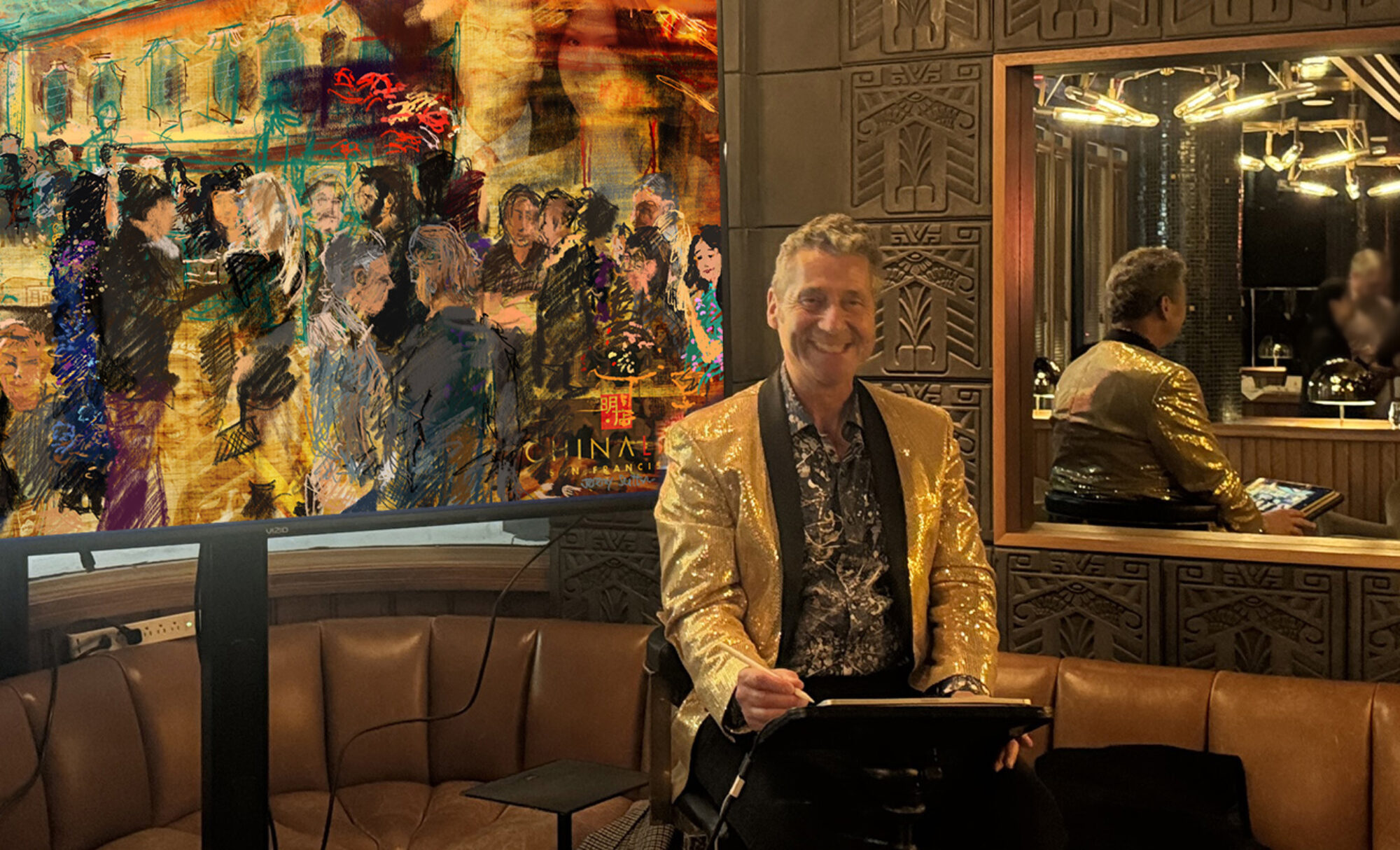
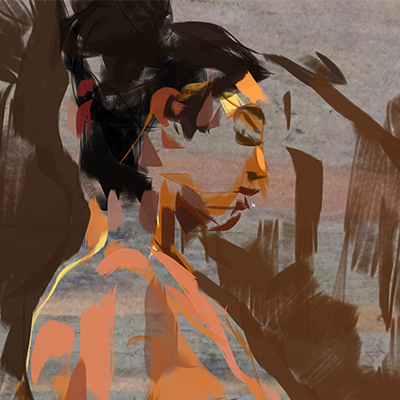

 Avalon Olds
Avalon Olds Breakwater Chevy
Breakwater Chevy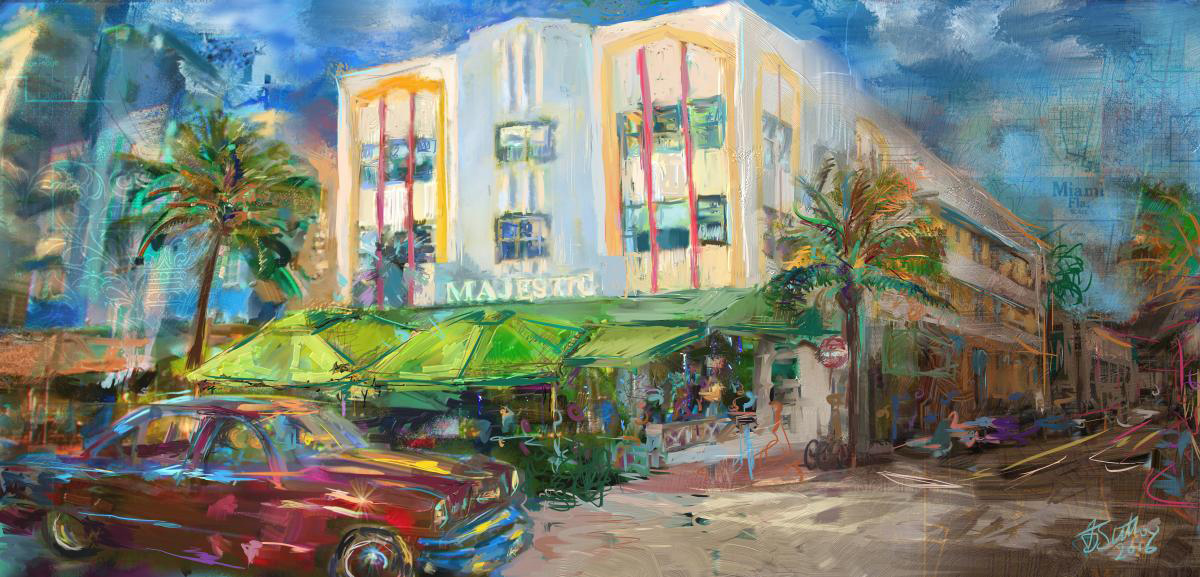 Majestic Kaiser
Majestic Kaiser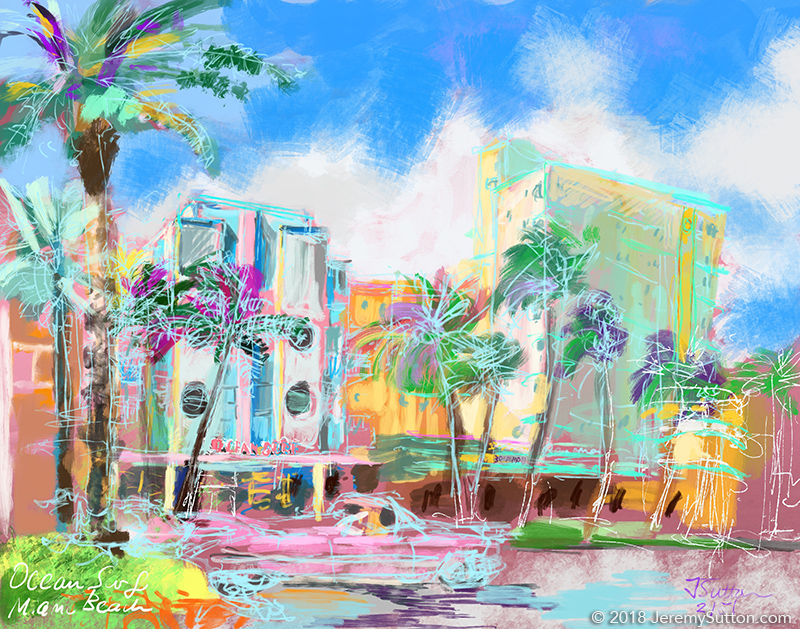 Ocean Surf Caddy
Ocean Surf Caddy Park Central Olds
Park Central Olds
